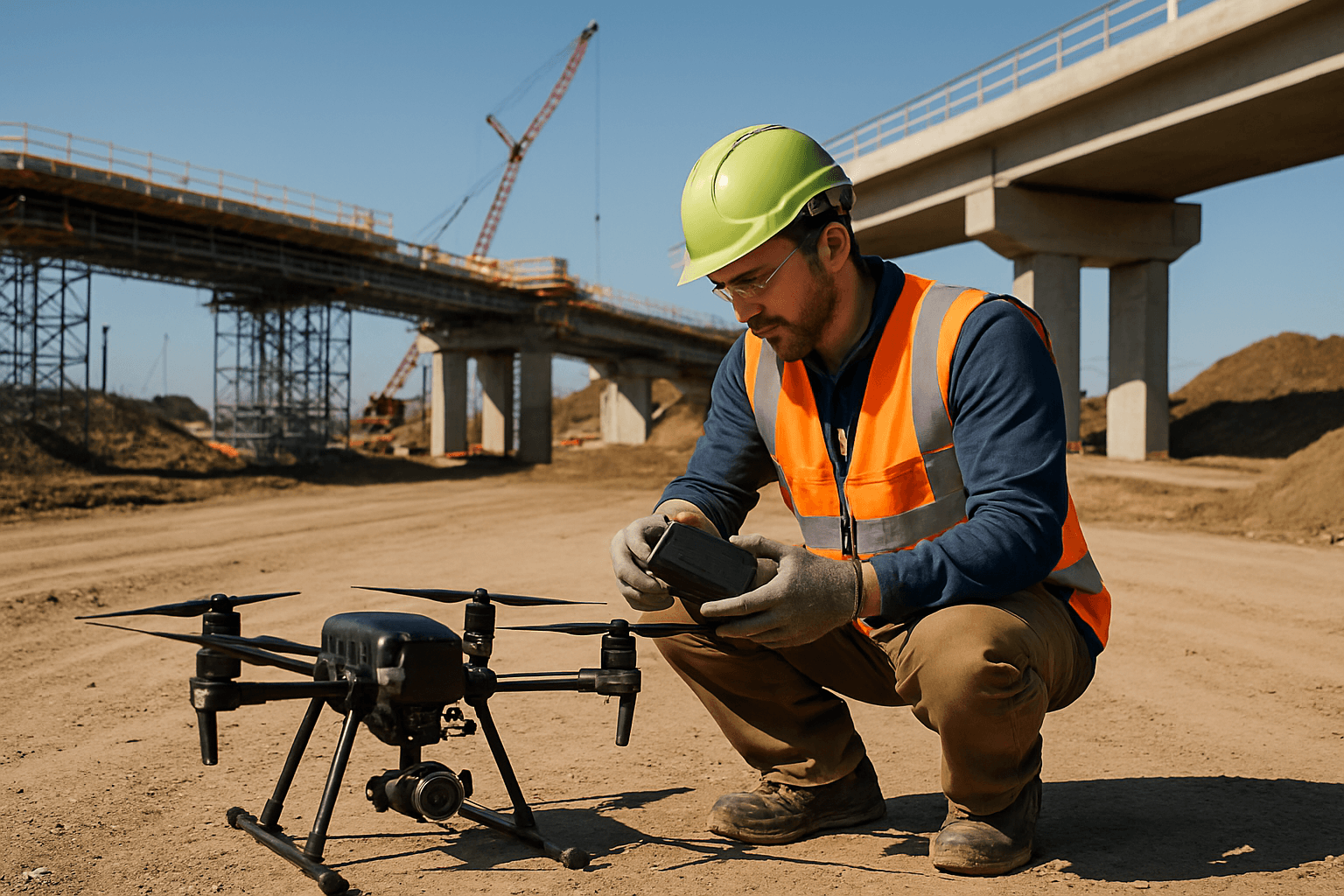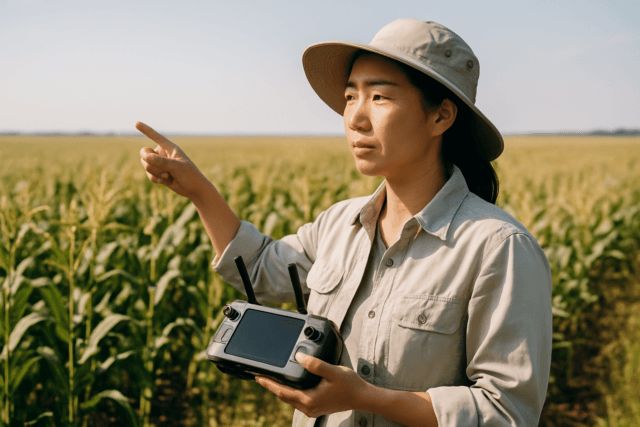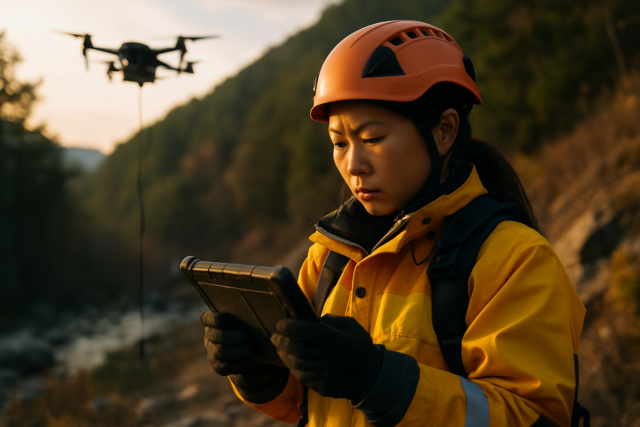Drones have emerged as a transformative technology, poised to revolutionize various industries and offering significant cost savings compared to traditional methods. From streamlining operations and enhancing safety to providing real-time data and analytics, drones are rapidly becoming an indispensable tool for businesses seeking to optimize efficiency and gain a competitive edge. In the UK, the drone market is experiencing substantial growth, with projections indicating a contribution of up to £45 billion to the UK economy by 2030 and net cost savings of £22 billion.
The Economic Ascent of Drones in the UK
The UK drone market is experiencing remarkable expansion, driven by increasing demand across diverse sectors. Several reports highlight this growth:
- Market Size and Growth: The UK drone market was valued at $1.2 billion in 2024 and is projected to reach $3.7 billion by 2035, exhibiting a compound annual growth rate (CAGR) of approximately 10.78% from 2025 to 2035. Some reports suggest even higher growth, projecting a CAGR of 20.58% to reach $3.7 billion by 2035.
- Economic Impact: By 2030, drones could contribute up to £45 billion to the UK economy, with over 900,000 drones operating in the UK skies. This growth is expected to generate £22 billion in net cost savings, reduce carbon emissions by 2.4 million tons, and create 650,000 jobs associated with a fully drone-integrated economy.
- Sectoral Savings: The public and defense, health and education sectors are expected to realize the largest cost savings (£4.6 billion), followed by agriculture, mining, water, gas, and electricity (£4.4 billion), and transport and logistics (£4.2 billion).
These figures underscore the significant potential of drone technology to drive economic growth, enhance productivity, and generate substantial cost savings across various sectors in the UK.
Key Areas of Cost Savings with Drones
Drones offer cost savings in several key areas:
1. Reduced Labor Costs
Drones can automate tasks that previously required significant manual labor. For example, in agriculture, drones equipped with high-resolution cameras and sensors can monitor crops, identify diseases, and assess crop health over large areas far more quickly and efficiently than traditional methods. Similarly, in construction and infrastructure, drones can conduct surveys and inspections, eliminating the need for expensive manned operations. In the energy sector, drones are used for methane detection and pipeline inspections, significantly reducing the time and labor involved.
- Example: A bridge inspection that might cost $10,000 using traditional methods can be completed for $5,000 or less using drones.
2. Increased Efficiency and Productivity
Drones can perform tasks faster and more efficiently than traditional methods, leading to increased productivity and reduced project timelines. In surveying, drone mapping can cut survey time from days to hours, providing faster data and accelerating project timelines. This efficiency is particularly beneficial for companies managing multiple sites.
- Example: Drones can inspect approximately 100 miles of pipeline in a matter of hours, a task that would take traditional teams or aircraft weeks to complete.
3. Enhanced Safety and Reduced Risk
Drones can eliminate the need for personnel to work in hazardous environments, reducing the risk of accidents and injuries. In industries such as mining, construction, and disaster response, drones can access hard-to-reach locations, assess structural integrity, and provide real-time data without putting human lives at risk. This enhanced safety translates to lower insurance premiums and reduced liability costs.
- Example: Using drones in hazardous environments like mining sites or disaster-stricken areas eliminates risks to human lives, offering a safer alternative for data collection and assessment.
4. Lower Operating Costs
Drones have lower operating costs compared to traditional methods such as manned aircraft and ground-based inspections. Manned aircraft, particularly helicopters, are expensive to operate due to fuel consumption and the need for a crew. Drones, on the other hand, require only a single operator and consume less energy, resulting in significant cost savings.
- Example: Electric drones generally have lower energy costs compared to fuel-powered vehicles used by traditional couriers.
5. Improved Data Quality and Accuracy
Drones equipped with advanced sensors and cameras can capture high-resolution images and real-time data, providing valuable insights for businesses. In agriculture, drones can be used for precision farming, enabling more accurate application of fertilizers, pesticides, and water, leading to reduced waste and increased productivity. In construction, drones can provide detailed site surveys and progress monitoring, allowing for better decision-making and reduced errors.
- Example: Drone surveys provide more detailed accuracy due to the collection of hundreds of thousands more data points compared to traditional methods.
6. Reduced Environmental Impact
Electric drones have a lower carbon footprint compared to traditional fuel-powered vehicles, contributing to environmental sustainability. This environmental benefit may translate to cost savings in the form of carbon credits or reduced environmental taxes in the future.
- Example: Drones help reduce fossil fuel-intensive farming through the use of spray UAVs powered by wind and solar energy.
Sector-Specific Cost Savings
The cost savings associated with drone technology vary across different sectors:
1. Agriculture
- Crop Monitoring and Management: Drones can monitor crop health, estimate yields, and manage resources more efficiently. Farmers can decrease food wastage by as much as 50% by using data collected through drone operations.
- Precision Farming: Drones enable more accurate application of fertilizers, pesticides, and water, saving operational costs and augmenting productivity.
- Increased Productivity: The UK’s agricultural sector could benefit from a productivity increase of over 30% through the use of drone technology.
2. Construction and Infrastructure
- Site Surveys and Inspections: Drones can conduct site surveys and inspections more quickly and safely than traditional methods, eliminating the need for expensive manned operations.
- Progress Monitoring: Drones provide detailed site surveys and progress monitoring, allowing for better decision-making and reduced errors.
- Cost-Effective Mapping: Mapping a project site using drones costs less than half the price of a hand-rendered map, and can be as low as a few hundred dollars per scan.
3. Energy
- Methane Detection: Drones offer more efficient, less costly, and safer methods of methane detection compared to traditional methods.
- Pipeline Inspections: Drones can inspect pipelines quickly and efficiently, reducing the time and labor involved.
- Cost Savings: By engaging with specialized drone services, companies are able to enhance their inspection practices, enhance safety, obtain better data quality and support sustainable initiatives while reducing operational costs.
4. Logistics and Transportation
- Last-Mile Delivery: Drones can improve last-mile delivery, particularly in busy areas where congestion can challenge traditional payment methods.
- Reduced Delivery Time: Drones can efficiently fly through cities and deliver packages directly to consumers, resulting in reduced delivery time and additional savings on operations for companies.
- Contactless Delivery: Drones provide a safer method for delivering vital services such as medical essentials and groceries, especially important during events that require contactless solutions.
5. Public Safety and Law Enforcement
- Enhanced Surveillance: Drones can be used for surveillance and search and rescue operations, providing real-time data and improving response times.
- Improved Efficiency: Drones offer increased efficiency and effectiveness in public safety and law enforcement activities.
Overcoming Barriers to Drone Adoption
Despite the numerous cost savings and benefits, several barriers hinder the widespread adoption of drone technology:
- Regulatory Hurdles: Complex and evolving regulations can create uncertainty and increase the cost of drone operations.
- Privacy and Safety Concerns: Public concerns regarding privacy and safety can limit the use of drones in certain areas.
- Initial Investment Costs: The initial costs of purchasing drones and related equipment can be a barrier for some businesses.
- Lack of Skilled Operators: The shortage of skilled drone operators can limit the availability of drone services.
- Industry Resistance: Resistance to adopting new technologies can slow the integration of drones into existing workflows.
Addressing these barriers through streamlined regulations, public education, and workforce development is essential to unlock the full potential of drone technology.
Strategies for Maximizing Cost Savings with Drones
Businesses can maximize cost savings with drones by implementing the following strategies:
- Identify Key Applications: Determine which tasks and processes can be most effectively and efficiently performed by drones.
- Hire a Professional Drone Service: Partner with a reputable drone service provider to access the latest technology and expertise without the need for significant upfront investment.
- Develop a Drone Integration Plan: Create a comprehensive plan for integrating drones into existing workflows, ensuring seamless data collection and analysis.
- Invest in Training: Provide training for employees to operate and maintain drones, ensuring safe and efficient operations.
- Stay Informed About Regulations: Stay up-to-date on the latest drone regulations and ensure compliance with all applicable laws.
The Future of Drone Technology and Cost Savings
As drone technology continues to evolve, the potential for cost savings will only increase. Advancements in drone hardware, software, and sensors will enable more complex and sophisticated applications, further reducing the need for manual labor and improving efficiency. The integration of artificial intelligence (AI) and machine learning technologies in drone operations is also reshaping the drone market, enabling automation of tasks and real-time data analysis.
The UK is well-positioned to capitalize on the growing drone market, with a supportive regulatory environment and a thriving ecosystem of drone companies and service providers. By embracing drone technology and addressing the remaining barriers to adoption, businesses in the UK can unlock significant cost savings and gain a competitive edge in the global marketplace.
Conclusion
Drones are revolutionizing industries across the UK, offering substantial cost savings through increased efficiency, enhanced safety, and improved data quality. From agriculture and construction to energy and logistics, drones are transforming the way businesses operate and creating new opportunities for growth. As the drone market continues to expand and technology advances, the potential for cost savings will only increase, making drones an essential tool for businesses seeking to optimize their operations and thrive in the modern economy. Embracing drone technology is not just about adopting a new tool; it’s about embracing a future of efficiency, safety, and sustainability.





